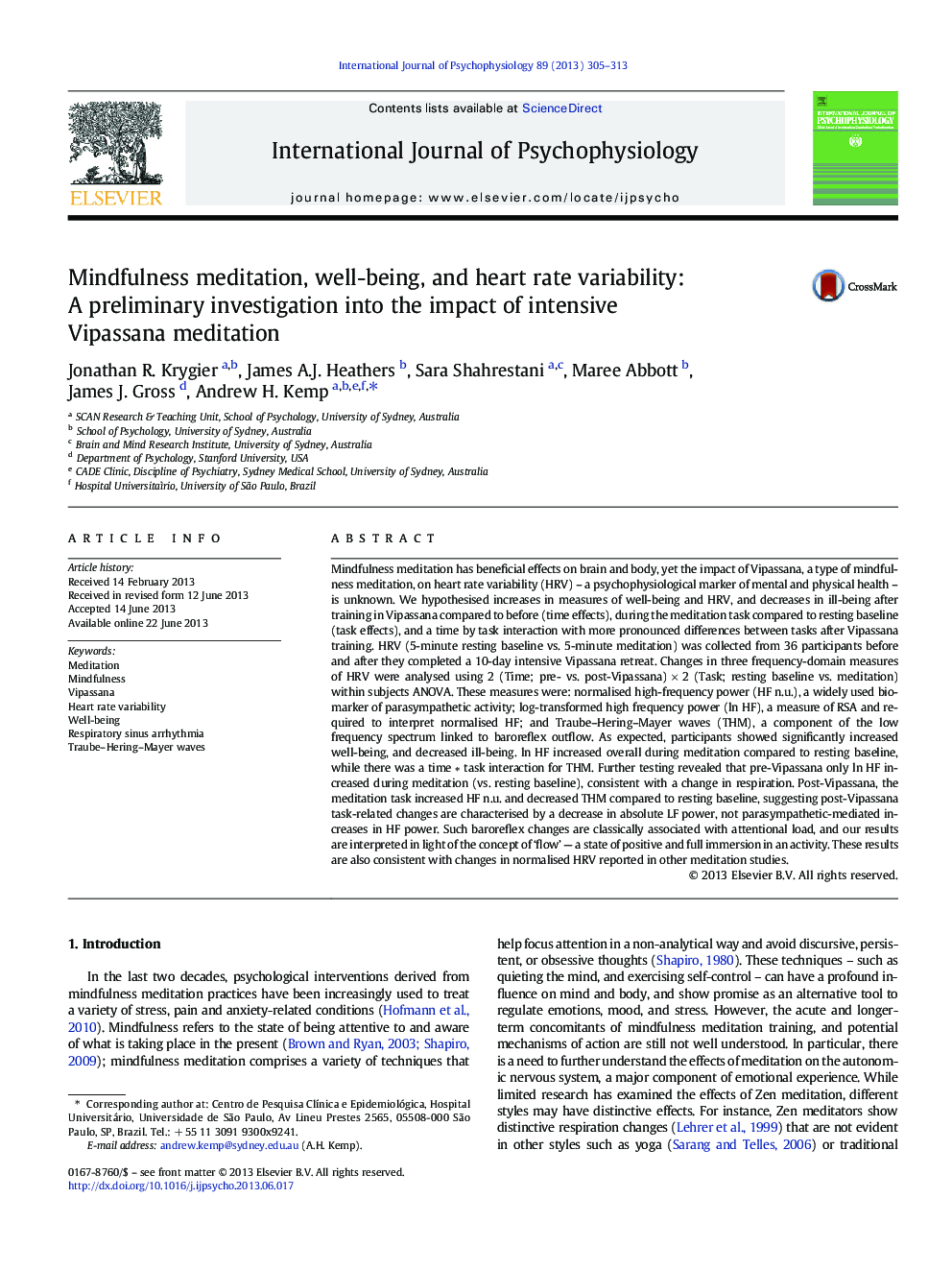| Article ID | Journal | Published Year | Pages | File Type |
|---|---|---|---|---|
| 7295865 | International Journal of Psychophysiology | 2013 | 9 Pages |
Abstract
Mindfulness meditation has beneficial effects on brain and body, yet the impact of Vipassana, a type of mindfulness meditation, on heart rate variability (HRV) - a psychophysiological marker of mental and physical health - is unknown. We hypothesised increases in measures of well-being and HRV, and decreases in ill-being after training in Vipassana compared to before (time effects), during the meditation task compared to resting baseline (task effects), and a time by task interaction with more pronounced differences between tasks after Vipassana training. HRV (5-minute resting baseline vs. 5-minute meditation) was collected from 36 participants before and after they completed a 10-day intensive Vipassana retreat. Changes in three frequency-domain measures of HRV were analysed using 2 (Time; pre- vs. post-Vipassana) Ã 2 (Task; resting baseline vs. meditation) within subjects ANOVA. These measures were: normalised high-frequency power (HF n.u.), a widely used biomarker of parasympathetic activity; log-transformed high frequency power (ln HF), a measure of RSA and required to interpret normalised HF; and Traube-Hering-Mayer waves (THM), a component of the low frequency spectrum linked to baroreflex outflow. As expected, participants showed significantly increased well-being, and decreased ill-being. ln HF increased overall during meditation compared to resting baseline, while there was a time â task interaction for THM. Further testing revealed that pre-Vipassana only ln HF increased during meditation (vs. resting baseline), consistent with a change in respiration. Post-Vipassana, the meditation task increased HF n.u. and decreased THM compared to resting baseline, suggesting post-Vipassana task-related changes are characterised by a decrease in absolute LF power, not parasympathetic-mediated increases in HF power. Such baroreflex changes are classically associated with attentional load, and our results are interpreted in light of the concept of 'flow' - a state of positive and full immersion in an activity. These results are also consistent with changes in normalised HRV reported in other meditation studies.
Related Topics
Life Sciences
Neuroscience
Behavioral Neuroscience
Authors
Jonathan R. Krygier, James A.J. Heathers, Sara Shahrestani, Maree Abbott, James J. Gross, Andrew H. Kemp,
